There’s no shortage of programs designed to help you save and grow your hard-earned dollars. They include budgeting systems and financial education apps, lightweight money management apps, and apps that instantly find better prices on planned purchases.
But it can be hard to make sense of the ever-expanding universe of money-saving apps on the market right now. That’s why we’ve put together this guide. It’s divided into three broad categories: budgeting and financial education apps, banking and investing apps, and cost-cutting apps.
Some are entirely free to use, others combine free and paid options, and others ask all users to pay by the month or year. But all have a common goal: to boost your fiscal health.
Best Personal Finance Apps: Budgeting & Financial Education Apps
These apps help users create monthly budgets and spending plans, provide helpful guidance on tricky financial topics, or both. Many appear on our list of the best budgeting apps on the market.
Unless otherwise noted, all are compatible with Android and iOS devices and work on desktop and laptop machines as well.
1. Personal Capital

Personal Capital is a robo-advisor that makes money by managing users’ investment portfolios, not recommending third-party financial products and services.
That means its budgeting tools come with no salesy recommendations for anything other than Personal Capital’s wealth management service, which is not available to users with less than $100,000 in investable assets.
For users who don’t want or can’t afford to manage their money or retain financial planning services with Personal Capital, there’s a nice lineup of free personal finance resources and budgeting tools available at no cost.
These include retirement and education planners, which help illuminate the cost of two major life goals (and estimate how much you need to save and invest to reach them), and a fee analyzer that exposes the true cost of your managed investments.
You can also take advantage of the investment checkup feature, an allocation analyzer that’s a godsend for do-it-yourself investors who don’t regularly rebalance their portfolios.
Read our full Personal Capital review for more information about this app.
2. Tiller Money
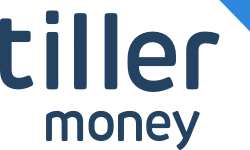
Tiller Money merges the granularity of old-fashioned spreadsheet-based budgeting with the convenience of a cloud-based app that syncs with nearly 20,000 external financial sources: bank accounts, brokerage accounts, employer-sponsored retirement accounts, and credit products like credit cards and personal loans.
No matter where you bank, borrow, and invest, your U.S.-based financial institution should sync with Tiller.
Tiller updates custom-created Google or Excel spreadsheets daily with auto-categorized transactions pulled from your synced accounts, theoretically enabling expense tracking for every dollar you earn. For example, a $50 grocery store purchase today appears as a “Groceries” or “Food” transaction (depending on your preference) tomorrow.
You’re always in control of your own categorization rules and color scheme, so your spreadsheets should always be easy to decipher, even if you don’t check them every day (or week). And you can always manually recategorize synced transactions if you’re not satisfied with your current spending categories.
Tiller offers an optional email alert feature that serves up a daily digest of your transaction activity to your inbox. If you manage your finances jointly with a spouse, domestic partner, roommate, co-parent, or anyone else or have a professional financial planner evaluate your cash flow from time to time, you’re free to share your spreadsheets securely with them.
Tiller Money offers a risk-free trial for 30 days from sign-up. You can cancel at any time without penalty during this period. Once the trial ends, Tiller costs $79 per year.
3. MoneyPatrol

MoneyPatrol is a dashboard-based budgeting app that syncs with thousands of financial accounts, including nontraditional spending reserves like gift cards and prepaid debit cards.
If you’re spreadsheet-averse and prefer not to make rule-laden budgets, MoneyPatrol is for you — the heart and soul of its budgeting operation is the Alerts & Insights feature, which provides bite-size bits of information by text or email.
If and when you want to drill down into the meat of your budget, MoneyPatrol has plenty of charts, tables, and panels that illuminate how you’re spending your money and where you could do better.
MoneyPatrol costs $59.99 per year after a 15-day free trial.
4. PocketSmith
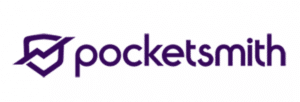
PocketSmith is a deluxe personal finance app with three plans, one of which is free:
- Basic. The basic plan is the free version, and it shows. Unlike many digital budgeting platforms, PocketSmith’s basic plan supports only manual transaction importing — it doesn’t sync with external financial accounts. It’s also somewhat restrictive: It limits you to six months of cash flow projections, 12 budget scenarios, and just two accounts. If your personal finances are simple, basic might be all you need, but you need to upgrade otherwise.
- Premium. For about $10 per month or $7.50 per month when paid annually, the premium version allows unlimited budgets, 10 external accounts, and cash flow projections up to 10 years into the future. And it syncs automatically with external accounts with automatic transaction categorization if and when manual transaction importing becomes a chore.
- Super. For about $20 per month or about $14 per month when paid annually, the super plan allows unlimited accounts and cash flow projections up to 30 years into the future. If you’re able to keep your financial plan on track, that’s long enough to replace a human financial planner at a fraction of their likely cost.
PocketSmith’s advantages include a bank feed that supports accounts in 36 countries and multiple non-U.S. currencies, both of which are excellent news for American emigrants and those attending university abroad.
It also has a budget calendar that helps you schedule monthly bills in an intuitive calendar view. PocketSmith also integrates seamlessly with Xero, a small-business accounting software product, and Mint.
5. Mint
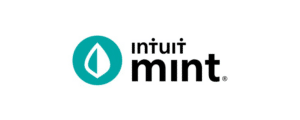
Mint is a free budgeting app with a comprehensive feature lineup designed to simplify and streamline users’ financial lives. It’s backed by Intuit, one of the biggest and best budget app and financial software providers in the U.S.
Mint’s accounts tracker syncs with thousands of United States-based financial institutions and updates connected balances in nearly real time. Its investment tracker does the same with external brokerage accounts with a bonus: identifying hidden 401(k) plan fees, which sap returns over time.
Mint’s core is a set of user-friendly budgeting tools that calculate average spending by category and provide insight into longer-term spending habits. A daily tracker provides an up-to-the-minute snapshot of precisely how much you can safely spend before your next payday.
Customizable account alerts warn of approaching due dates, suspicious activity, and other potential red flags. And you can check your FICO score for free on demand.
Although Mint doesn’t charge a membership fee, it does serve up customized product and service recommendations based on user-provided information (such as net worth and homeowner status). On the bright side, you don’t have to act on the budget app’s recommendations.
Read our full Mint review for more information about this app.
6. Monarch Money

Monarch Money is an all-in-one money management platform with powerful budgeting, financial planning, and net worth tracking tools. With more features coming down the pipeline — including personalized financial advice tailored to your unique situation — Monarch Money is much more than a budgeting app. It has real potential to replace your human financial advisor.
Monarch Money’s core features include:
- Net Worth Tracking: Monarch Money’s single-view dashboard makes it easy to track your net worth over time. It pulls balance data and other information from your external deposit and investment accounts, owned real estate, and any other trackable assets you link. View your balance history to glean big-picture insights into your cash flow and savings.
- Spending Insights: Use Monarch’s top merchants list to spot potential overspending while tracking your spending across custom categories.
- Transaction Rules and List: Categorize and sort recurring and one-off spend using custom transaction rules. Plus, see all your transactions at a glance and flag any you’d like for further review
- Collaboration: Share money management duties with a partner, roommate, or anyone else you share finances with — at no extra charge.
- Financial Plan and Savings Goals: Create a customized financial plan with help from Monarch Money, then track your progress over time. You can set and track progress toward specific savings goals as well.
- Investment Tracking: Track your investment value over time and analyze your portfolio’s components to ensure you’re in sync with your financial plan.
Monarch Money offers all this and more for 9.99 per month when paid monthly or $89.99 per year when paid annually ($7.50 per month).
Best Personal Finance Apps: Banking & Investing Apps
These apps help users manage their money in deposit accounts or investing accounts (or both). Many appear on our roundup of the best investment apps.
Unless otherwise noted, all deposit accounts are insured by the Federal Deposit Insurance Corporation (FDIC) up to the legal maximum per account type (currently $250,000).
7. Douugh
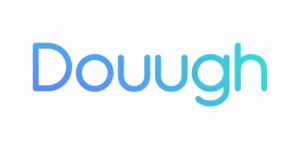
Douugh is an automated money management app that keeps your finances in order without asking too much (or anything, really) from you. It’s compatible with Android and iOS and integrates seamlessly with the Cash App, PayPal, Venmo, and Apple Pay.
Douugh’s engine is an automated financial organization tool called Salary Sweeper. Using what it knows about your cash flow, Salary Sweeper sends income to one of three sub-accounts (Jars):
- Bills, earmarked for near-term expenses you’re likely to incur in the next 30 days
- Savings, which you can further segment for specific goals
- Grow, an automated investment sub-account
If Douugh does its job — and it usually does — you should never be surprised by an unpaid bill or overdraft, and you should remain on track to achieve your longer-term financial goals. In the meantime, you can rest assured that the full balance of your Mastercard debit card (free with your Douugh account) is safe to spend.
8. Chime

Chime® is among the best online financial apps for multiple reasons, not least of which is its early payday promise. Some direct deposit customers get paid two days earlier than usual (most often Wednesday rather than Friday).
Chime also never charges hidden fees — a significant advantage over traditional banks.
Chime’s spending account, basically a checking account, comes with a fee-free Visa debit card accepted at millions of locations worldwide. An optional savings account is a great place to store funds you don’t need immediately, bearing in mind that withdrawals are limited by law to six per statement cycle.
The automatic savings feature is a rules-based tool that allows you to transfer up to 10% of each paycheck to your savings account without manually doing so each time.
Early access to direct deposit funds depends on the timing of the submission of the payment file from the payer. We generally make these funds available on the day the payment file is received, which may be up to 2 days earlier than the scheduled payment date.
Chime is a financial technology company, not a bank. Banking services provided by The Bancorp Bank, N.A. or Stride Bank, N.A., Members FDIC.
9. Stash
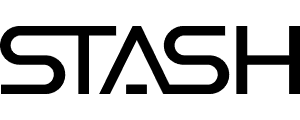
Stash is a micro-investing platform that caters to self-directed investors seeking total control over their stock portfolios. Stash allows you to invest in fractional shares.
That means you can purchase individual stocks, bonds, and exchange-traded funds in increments as low as $0.01 — and create a truly diversified portfolio on a shoestring.
Stash has two plans, neither free. The lowest-priced plan, Stash Growth, costs $3 per month and offers:
- A taxable investing account
- A banking account1 with an early direct deposit2 (up to two days early) and Stock-Back® Rewards3 on eligible transactions
The Growth plan costs $3 per month and adds a tax-advantaged retirement account.
The Stash+ plan costs $9 per month and adds a metal Stock-Back® Card1 and you’ll get 1% back in stock on all purchases up to $1,000 each month. After you’ve spent $1,000+, you’ll earn 0.125% back in stock on every swipe. , a monthly market insights report, and the option to add up to two custodial accounts to teach your kids about money.
An automatic savings tool is available at all price points.
For both Stash Growth and Stash+ plans, you’ll receive up to 3% back in stock at certain merchants with bonuses. For a full list and more details, see the Terms and Conditions.
For a limited time, new Stash customers get $5 at sign-up. To claim your $5, just open your account at the link below and fund it with at least $5.Read our full Stash review for more information about this app.
10. Varo
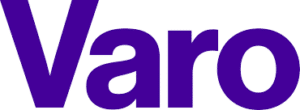
Varo is an easy-to-use financial platform with two offerings:
- Varo Bank Account. This checking account has an early payday option^ and no-fee overdraft up to $50 when you complete at least five Varo Visa® debit card purchases in each calendar month and receive at least $1,000 in total direct deposits into your account in the same calendar month
- Varo Savings Account. This high-yield savings account has one of the best annual percentage yields (APYs) around.
Neither account comes with minimums or hidden fees. Varo does ask customers seeking high savings yields to make an effort.
To maximize your savings account yield, Varo recommends you “[o]pen a Varo Savings Account and meet Varo’s three easy requirements to earn 5.00% Annual Percentage Yield* on balances up to $50,000 — one of the best online savings yields in the business. Otherwise, earn 3.00% APY. The three requirements are: Make at least five Varo Visa debit card purchases in each calendar month, receive total direct deposits of $1,000 or more in the same calendar month, and maintain a savings account balance up to $5,000.”
^ Early access to direct deposit funds depends on the timing of the payer’s submission of deposits. We generally post such deposits on the day they are received, which may be up to two days earlier than the payer’s scheduled payment date.
* Varo annual percentage yield (APY) is accurate as of April 1, 2021. This rate is variable and may change. There’s no minimum balance required to open an account. Balance in savings account must be at least $0.01 to earn interest.
11. Qapital
Qapital is an excellent online stock broker for novice and intermediate traders and a sound online bank for consumers looking to park daily funds. Although it doesn’t have a free plan, it does offer a set of powerful features that more than pay for themselves with consistent use.
These include the option to round up the change on every debit card transaction and a payday savings feature that automatically transfers a portion of your paycheck into your savings account.
For $3 per month, Qapital combines these features with a checking and savings account. For $6 per month, it adds a low-cost investing solution with prebuilt portfolios that align with users’ investing goals and time horizons.
For $12 per month, it adds a Money Missions feature that coaches you toward financial optimization (and according to Qapital, helps users save an average of $5,000 per year).
Read our full Qapital review for more information about this app.
12. Robinhood
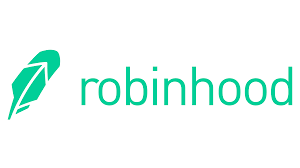
Robinhood is the original commission-free online trading platform and another excellent choice for novice and intermediate investors.
Although many other online stock brokers now follow its commission-free lead, Robinhood continues to innovate with new features like a cash management account with competitive yields and access to alternative investments like precious metals and cryptocurrencies.
Soon enough, Robinhood plans to roll out fractional share investing too.
For a limited time, apply for a new Robinhood brokerage account and get approved to get a free stock worth $2.50 to $200 per share.
13. Acorns

Much like Stash and Twine, Acorns is a low-cost micro-investing and money management app that makes it easy to boost your portfolio’s balance through automatic roundups and recurring deposits.
Its prebuilt portfolios span a range of risk tolerances and investing objectives, from conservative (mostly bonds) to aggressive (all stocks).
For $3 per month, the Personal plan includes Acorns Invest, Acorns’ basic taxable investing account; Acorns Later, a tax-advantaged retirement investing option; and Acorns Checking, a checking account with no additional fees and opportunities to earn bonus cash.
And for $5 per month, the Family plan adds Acorns Early, a kid-friendly investment account that allows multiple minor accounts at no additional cost and provides family-friendly financial advice.
Plus, new Acorns Checking customers can earn up to $100 on the first $1,000 spent.
Read our full Acorns review for more information about this app.
14. Digit
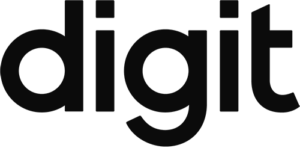
Digit is an automated savings app that cleverly and painlessly squirrels away funds for a rainy day (or any of the many custom goals you can create and fund in the app).
The secret is a powerful algorithm that utilizes historical cash flow data to learn how and when you spend your money — and how much Digit can safely add to your FDIC-insured savings balance at any given time.
For $5 per month after a 30-day free trial you can cancel at any time, Digit offers:
- Unlimited savings goals you can create and customize
- A 0.1% bonus on all savings balances every three months
- Unlimited withdrawals
- No minimum balances or spending limits
- Automatic credit card payoffs — Digit saves up as you make only the minimum payment, then neutralizes your balance once you’ve saved enough
Read our full Digit review for more information about this app.
15. Titan
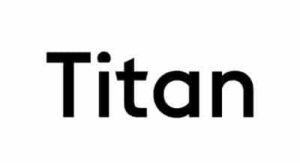
Titan is not your average personal finance app. It’s more like an active money manager that deploys advanced investing strategies normally reserved for the wealthiest 0.1% — or, as Titan puts it, “a world-class hedge fund in your pocket.”
With a low minimum to invest (just $100) and multiple IRA options, it’s a solid choice for everyday folks with long time horizons. And, according to Titan’s back-testing data, its performance exceeds that of better-known competitors like Wealthfront and common benchmarks like the S&P 500 stock market index.
Titan does charge higher management fees than most robo-advisors: 1% AUM for accounts with investable balances above $10,000 and $5 per month for accounts with balances under $10,000.
But it waives performance fees (a mainstay of the hedge fund universe) and comes with SIPC insurance on balances up to $500,000.
16. Twine

Twine is a fun, low-cost app that helps you organize and reach your saving and investing objectives, helping you achieve your near- and long-term financial goals.
Twine uses the appropriately named Twine Save and Twine Invest accounts to manage set goals and work its magic. Simply open one or both accounts and begin creating customized savings goals — whether that’s a vacation, credit card debt, or a security deposit.
If you manage your finances jointly with someone else, such as a spouse, partner, roommate, or co-parent, invite them to the app and sync your accounts to work together toward your shared savings goals.
You’re not obligated to invest with Twine. If you do, it charges $0.25 per month per $500 invested, which works out to an annualized management fee of 0.6% — higher than most robo-advisors but lower than most full-service financial advisors.
Read our full Twine review for more information about this app.
Learn More
17. Greenlight

Greenlight is a kid-friendly debit card with built-in parental controls. For kids, it’s the perfect way to take those first steps toward financial independence. And for parents, it’s a vital financial education tool that doesn’t put hard-earned parental or filial funds at risk.
Greenlight offers some clutch money management features for kids and parents alike:
- An in-app chore list that makes it easy to reward kids for jobs well done (around the house) via funding reloads
- Allowance transfers that can be automated on a weekly or monthly basis without any manual deposits
- Real-time parental notifications whenever minor users swipe, tap, or enter the Greenlight card
- Customizable spending rules parents can set for kids
- Customizable earning, spending, and saving goals kids can set for themselves.
Greenlight’s debit card plan (Greenlight) costs $4.99 per month, per family. Greenlight + Invest adds a kid-friendly investing platform with full parental control for about $3 more per month. And Greenlight Max tacks on identity theft protection, cellphone coverage, and purchase protection for another $2 per month.
18. Copper Banking
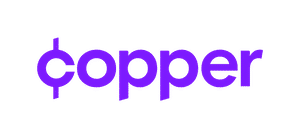
Copper is another kid-friendly money management app. Unlike Greenlight, which is appropriate for younger children in addition to tweens and teens, Copper is marketed squarely at the teen demographic: 13 to 17 year-olds (and their parents, of course).
The Copper debit card is accepted at countless merchants nationwide and offers free cash withdrawals at more than 55,000 ATMs. With the Copper app, parents can monitor teens’ spending and top up their accounts within minutes. Meanwhile, teens can take advantage of an automatic savings tool that reinforces the value of a dollar.
19. EarlyBird

EarlyBird is yet another kid-friendly money management app built on the idea that wealth-building should be a lifelong pursuit, not something to be done in a hurry as one approaches retirement age.
EarlyBird empowers adults (whether they’re parents, relatives, or friends) to give the gift of wealth to minor users. It’s a snap for gift-givers to deposit funds into minors’ custodial accounts, and they can leave a personalized video message announcing their gifts if they’re moved to do so.
Like other robo-advisors, EarlyBird invests account funds in risk-appropriate portfolios composed mainly of low-cost ETFs. Accounts are semi-customized and SIPC-insured up to the legal maximum, providing parents and other gift-givers with valuable peace of mind.
EarlyBird doesn’t charge for the first $200 under management on the platform. After that, there’s a subscription fee of $1 per month per child. The gift processing fee is always $2 per gift.
Best Personal Finance Apps: Cost-Cutting Apps
These apps help users reduce or avoid expenses. Some do this by tracking and eliminating redundant or unnecessary bills, while others offer discounts or rewards on planned purchases.
You’ll find a couple in our list of the best shopping rewards programs and apps.
20. Trim

Trim is an AI-powered virtual assistant that saves users money on obligations like bill payments, subscriptions, and credit cards.
To get started, simply connect any accounts you’d like Trim to track. Trim then goes to work — analyzing your spending patterns and pointing out opportunities to save.
Trim’s free offering includes a financial dashboard that displays all linked accounts, including important financial details such as overdraft fee tracking and notifications, personalized alerts, bill reminders flagging pending due dates, and a feature that lets you cancel subscriptions you no longer need.
Trim has some paid value-adds, including:
- A high-yield savings account that pays a 4% annualized bonus on the first $2,000 saved and includes an automated savings feature
- Bill pay negotiation (Trim negotiates directly with your payees and tries to reduce upcoming bills)
- A debt payoff feature that could help you pay down high-interest credit card debt faster (and potentially raise your credit score as a result)
Trim isn’t clear about pricing for savings or debt payoff. Trim’s bill negotiation service costs 33% of any yearly savings. If Trim can’t lower your bills, you won’t pay a dime; if it can, it takes about a third of the windfall.
21. Truebill

Truebill is a lot like Trim: a user-friendly assistant that helps users reduce recurring expenses and pay down debt faster.
With visibility into deposit and investment account balances in addition to billing accounts, Truebill’s financial dashboard is even more comprehensive than Trim’s. And like Trim, it has a free subscription cancellation feature.
Truebill’s paid bill negotiation feature is a bit pricier than Trim’s. Truebill takes anywhere from 30% to 60% cut of any negotiated savings.
22. Billshark

Billshark is another financial assistant in the Trim and Truebill vein, though it’s even more narrowly focused on two money-saving functions: negotiating bill balances downward and canceling subscriptions that busy users have forgotten about (or just don’t have the energy to cancel).
Both features are paid. Bill negotiation costs 40% of any savings and nothing out of pocket if Billshark is unsuccessful.
Subscription cancellation costs $9 per subscription — a small price to pay, but still a drawback relative to Trim’s and Truebill’s free-cancellation features.
23. Capital One Shopping
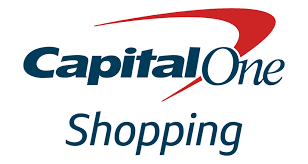
Capital One Shopping is a powerful free app and browser plugin built to help users save money on purchases they were planning to make anyway — and deals too good to pass up.
The money-saving browser plugin is the real standout here. When you shop Amazon, it automatically searches hundreds of other online merchants to find a better deal. If Amazon has the best price, it lets you know.
And when you shop non-Amazon retailers, Capital One Shopping automatically looks for coupon codes and other discounts to reduce your final price.
Read our full Capital One Shopping review for more information about this app.
24. Honey
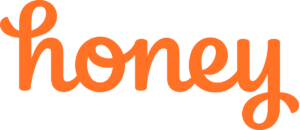
Like Capital One Shopping, Honey is a free browser plugin that searches hundreds of sources to find better prices.
The plugin works on thousands of retailers’ websites, boasts countless active promo codes, and automatically compares Amazon prices against a slew of competitors’.
According to Honey, the average discount is nearly 18%, and the average user saves $126 annually.
Read our full Honey review for more information about this app.
25. Ibotta

Ibotta is a free cash-back app that works for online and in-store purchases with more than 1,500 retail partners.
Use the browser extension or mobile app to earn instant cash back on digital purchases or link your store loyalty accounts to earn cash back on in-store purchases within 24 hours, or use the Ibotta mobile payments feature to earn instant cash back at the point of sale.
You can even use the app to submit paper receipts for cash back. Location-enabled alerts for nearby offers ensure you never miss an opportunity to save when you’re out.
For a limited time, get a $20 welcome bonus when you join Ibotta.
Read our full Ibotta review for more information about this app.
26. Fetch Rewards

Fetch Rewards excels at one thing: saving users money on grocery store purchases. Fetch partners with hundreds of popular brands to offer rewards on thousands of products every day.
Just scan your receipt after you shop, and Fetch does the rest — tallying up your rewards and depositing them into your account.
Redeem for more than 100 different retail gift cards or opt for a Visa or Mastercard gift card that’s accepted at millions of locations worldwide.
Read our full Fetch Rewards review for more information about this app.
27. Dosh
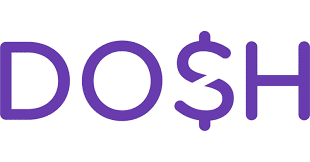
Dosh users automatically earn cash back on eligible spending with partner retailers, restaurants, travel merchants, and more.
The process couldn’t be simpler — just link your cards to the secure app, spend as you normally would, and watch cash back appear in your Dosh account. With more than 100,000 locations eligible to earn cash back through Dosh, you’re never far from your next opportunity.
Cash out by bank transfer, PayPal, or Venmo once you hit $25 in accrued rewards.
Read our full Dosh review for more information about this app.
Final Word
Each of these apps strengthens users’ finances in some way, whether by making it easier to track spending, reducing overspending, finding opportunities to trim bills or reduce the impact of planned expenditures, or painlessly squirreling away funds for a rainy day.
Even those that charge for their services — and many do — more than justify their cost with consistent use.
And there’s no limit on the number of money-saving apps you can use to make sense of your personal finances.
Capital One Shopping compensates us when you get the Capital One Shopping extension using the links we provided.
STASH DISCLOSURES
Paid non-client endorsement. See Apple App Store and Google Play reviews. View important disclosures.
Nothing in this material should be construed as an offer, recommendation, or solicitation to buy or sell any security. All investments are subject to risk and may lose value.
1 Stash Banking services provided by Stride Bank, N.A., Member FDIC. The Stash Stock-Back® Debit Mastercard® is issued by Stride Bank pursuant to license from Mastercard International. Mastercard and the circles design are registered trademarks of Mastercard International Incorporated. Any earned stock rewards will be held in your Stash Invest account. Investment products and services provided by Stash Investments LLC and are Not FDIC Insured, Not Bank Guaranteed, and May Lose Value.
2. Early access to direct deposit funds depends on when the payor sends the payment file. We generally make these funds available on the day the payment file is received, which may be up to 2 days earlier than the scheduled payment date.
3 All rewards earned through use of the Stash Stock-Back® Debit Mastercard® will be fulfilled by Stash Investments LLC and are subject to Terms and Conditions. You will bear the standard fees and expenses reflected in the pricing of the investments that you earn, plus fees for various ancillary services charged by Stash. In order to earn stock in the program, the Stash Stock-Back® Debit Mastercard must be used to make a qualifying purchase. Stock rewards that are paid to participating customers via the Stash Stock Back program, are Not FDIC Insured, Not Bank Guaranteed, and May Lose Value.
*Offer is subject to T&Cs